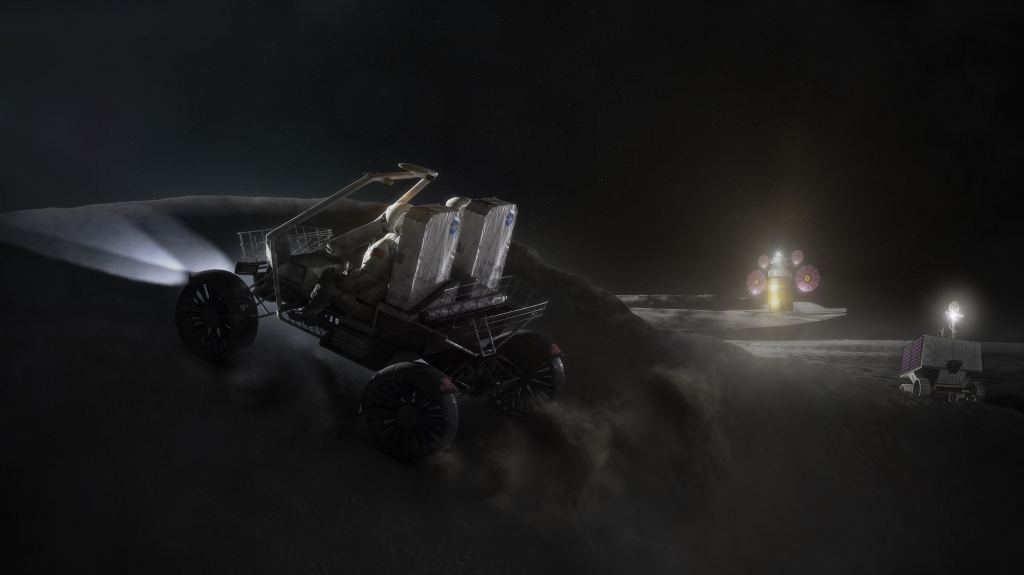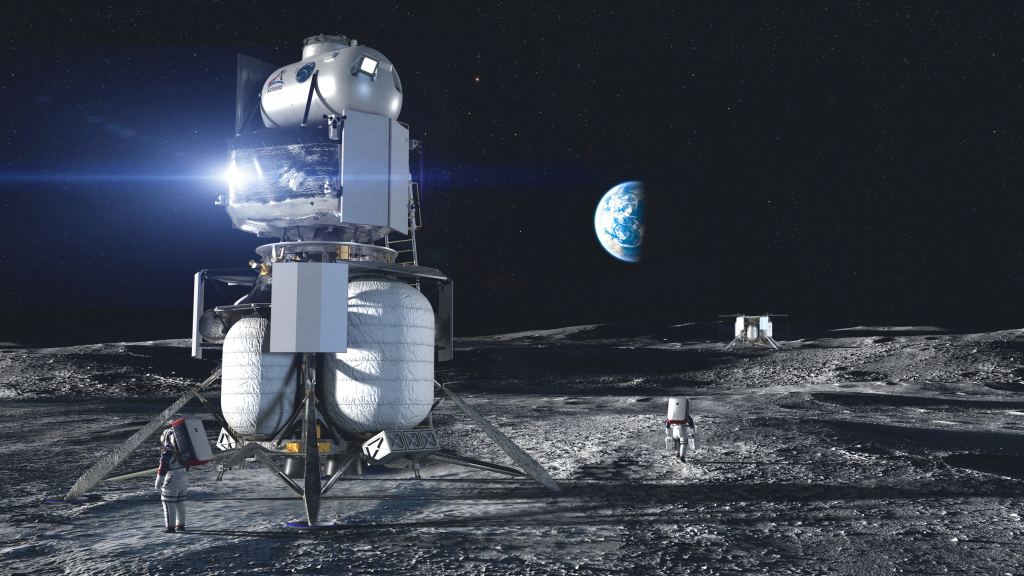As part of Project Artemis, which was announced in May of 2019, NASA will be sending the first woman and the next man to the Moon for the first time since the Apollo Era. To make this happen, NASA has partnered with the private aerospace industry to develop all the necessary systems. At the same time, NASA has entered into collaborative agreements with other space agencies to ensure that lunar exploration is open to all.
To formalize these agreements and ensure that all parties are committed to the same goals, NASA recently drafted a framework for cooperative lunar exploration and development. Known as the Artemis Accords, this series of bilateral agreements (which are grounded in the Outer Space Treaty of 1967) establish common principles for international partners who want to become part of humanity’s long-awaited return to the Moon.
As NASA described in a recent press statement, the chief aim of the Artemis Accords is to ensure that the exploration of space is conducted for the sake of peaceful purposes. At the same time, overarching goals include the desire for transparency, scientific cooperation, the sharing of scientific data, the utilization of space resources, and ensuring the protection of humanity’s shared lunar heritage. As they state:
“International cooperation on Artemis is intended not only to bolster space exploration but to enhance peaceful relationships between nations. Therefore, at the core of the Artemis Accords is the requirement that all activities will be conducted for peaceful purposes, per the tenets of the Outer Space Treaty.”
Space Resources
The Accords recognize the right of signatories to extract and utilize resources from the Moon, Mars, and asteroids, which are deemed essential to the creation and support of a sustainable lunar exploration program. Specifically, NASA states that the Accords “reinforce that space resource extraction and utilization can and will be conducted under the auspices of the Outer Space Treaty, with specific emphasis on Articles II, VI, and XI.”
These articles collectively address the issue of sovereignty. Whereas Article II states that outer space “is not subject to national appropriation by claim of sovereignty, by means of use or occupation, or by any other means.” Article VI establishes that parties to the Treaty “shall bear international responsibility for national activities in outer space… whether such activities are carried on by governmental agencies or by non-governmental entities.”

Article XI, meanwhile, states that all parties to the Treaty must “agree to inform the Secretary-General of the United Nations as well as the public and the international scientific community… of the nature, conduct, locations and results of such activities.” In short, these articles indicate that all activities on the Moon conform to international law and no one has the right to make any sovereign claim to space.
While affirming the spirit of the Outer Space Treaty, this declaration is also likely to smooth over certain legal ambiguities that have become a focal point of space policy in recent years. This is well-timed since any and all sources of potential conflict need to be resolved before humanity goes back to the Moon to stay.
Outer Space and Moon Treaty
The inclusion of space resources is no doubt related to the Trump administration’s executive order (signed in April of this year) that formally recognizes the rights of private interests to claim resources in space. This order, titled “Encouraging International Support for the Recovery and Use of Space Resources,” addressed a long-standing debate about the commercial implications of the Outer Space Treaty.
Basically, the Treaty dealt with matters of national appropriation and did not specifically address issues of private (commercial) appropriation. For this reason, there are those who have argued for decades that the Outer Space Treaty does not prevent individuals and companies from declaring property rights over lunar resources.

The executive order was an attempt to resolve this “loophole”, specifically by rejecting the provisions of the Moon Treaty that prevented parties from declaring property rights on the Moon. This agreement was drafted by the UN in 1979 and also stipulated that the Moon should be used for the benefit of all humanity and that non-scientific activities should be governed by an international framework.
This is spelled out in Article XI, section 3, of the Treaty where it states:
“Neither the surface nor the subsurface of the moon, nor any part thereof or natural resources in place, shall become property of any State, international intergovernmental or non-governmental organization, national organization or non-governmental entity or of any natural person.”
In the executive order, the Moon Treaty is mentioned by name. First, the order states that the Outer Space Treaty has led to uncertainty regarding the rights of commercial enterprises to conduct resource operations in space. It goes on to say that the Moon Treaty has only deepened this confusion, “particularly because the United States has neither signed nor ratified the Moon Agreement.”
By stating that resource extraction can be consistent with the Outer Space Treaty, the Artemis Accords could be seen as an attempt to close the “loophole” by other means. For instance, Article VI states twice that states that are signatories to the Treaty bear responsibility for activities of non-governmental agencies, and that said agencies “require authorization and continuing supervision by the appropriate State Party to the Treaty.”

So while companies like Planetary Resources, Deep Space Industries, SpaceX, Blue Origin, and a multitude of other companies will be allowed to extract resources on the Moon, they will need to do so in accordance with international law and under national supervision. Similarly, this protocol is reminiscent of another Article in the Moon Treaty.
This would be Article XI, which states that the Moon “and its natural resources are the common heritage of mankind.” This is fleshed out more in section 5 of the Article, where it says: “States Parties to this Agreement hereby undertake to establish an international regime, including appropriate procedures, to govern the exploitation of the natural resources of the moon as such exploitation is about to become feasible.”
Of course, the implications of this provision regarding space resources go far beyond commercial mining. They also include lunar ice, which is absolutely essential for the long-term exploration of the Moon and the creation of a permanent human presence there. Regolith is also a resource that NASA and other space agencies want to harness as part of a process known as In-Situ Resource Utilization (ISRU).
For over a decade, NASA, the ESA, and China have expressed the desire to create a lunar base in the South Pole-Aitken Basin, which is littered with permanently-shaded craters that are known to contain abundant water ice. Local regolith could be converted into building materials by either bombarding it with microwaves to create a molten ceramic (sintering) or mixing it with a bonding agent to create “lunarcrete.”

Protecting Lunar Heritage
The Accords also stipulate that NASA and other signatory nations will commit to preserving lunar heritage by protecting “sites and artifacts with historic value.” This is relatively unprecedented in the history of space treaties. Whereas the Outer Space Treaty makes no mention of heritage, Article 11 of the Moon Treaty mentions it only in passing: “The moon and its natural resources are the common heritage of mankind.”
It’s a safe assumption that places with historic value would include landing sites, particularly Tranquility Base where the Apollo 11 mission landed on July 20th, 1969. Located in the equatorial region of Mare Tranquillitatis (aka. the “Sea of Tranquility”) on the “light side” of the Moon, this site still contains artifacts of the Moon Landing.
These include the descent stage of the Eagle lander, “Old Glory” (the American flag planted by Armstrong and Aldrin), and the footprints they left behind in the lunar soil. Tranquility Base is one of six Apollo landing sites on the Moon, all of which contain similar artifacts that have immeasurable historic value.
As such, it is both necessary and desirable that nations committed to returning to the Moon (and staying there) ensure that these sites are off-limits to surveyors, miners, and other scientific or commercial ventures that could compromise them. Much like ancient ruins here on Earth, you can look and you can take pictures, but you can’t touch!

Other Provisions
Other provisions of note include a commitment to offering emergency assistance in the event of a mission going awry, committing to debris mitigation, the registration of space objects to ensure that radio inference can be mitigated, sharing information, and diffusing potential conflicts. These provisions reaffirm articles of the Outer Space Treaty, as well as the Rescue Agreement.
Also known as the “Agreement on the Rescue of Astronauts, the Return of Astronauts and the Return of Objects Launched into Outer Space,” this agreement was passed by the UN General Assembly in 1967. Building on Articles V and VIII of the Outer Space Treaty, the agreement states that all signatories shall take all possible steps to rescue and assist astronauts in distress and assist with the recovery of spacecraft.
Similarly, the commitment to orbital debris mitigation is consistent with both the Outer Space Treaty and the Space Debris Mitigation Guidelines of the United Nations Committee on the Peaceful Uses of Outer Space (COPUOS). These guidelines were officially adopted in 2007, and with the commercialization Low Earth Orbit (LEO) taking place, all future missions must take orbital debris into consideration.
But perhaps the most exciting thing about the Artemis Accords is what they represent. Like the Outer Space Treaty, which was established in anticipation of the Apollo program and the deployment of the first space stations, these Accords anticipate a future where we have returned to the Moon and built all the infrastructure we need to stay there.

It has taken us many decades to get to the point where a return to the Moon is in the works, and we’re still forced to deal with the frustrating delays and setbacks. Nevertheless, it seems pretty clear that an age where regular missions to the Moon are possible – performed by commercial launch services as well as multiple space agencies – is just around the corner.
Who knows? Maybe the prospect of lunar colonies, thriving industries, and permanent residents (“Loonies” perhaps?) could be not far behind!
For more information, check out the PDF of the Artemis Accords statement, Outer Space Treaty (UNOOSA), the Moon Treaty, and the “Executive Order on Encouraging International Support for the Recovery and Use of Space Resources.”
Further Reading: NASA

